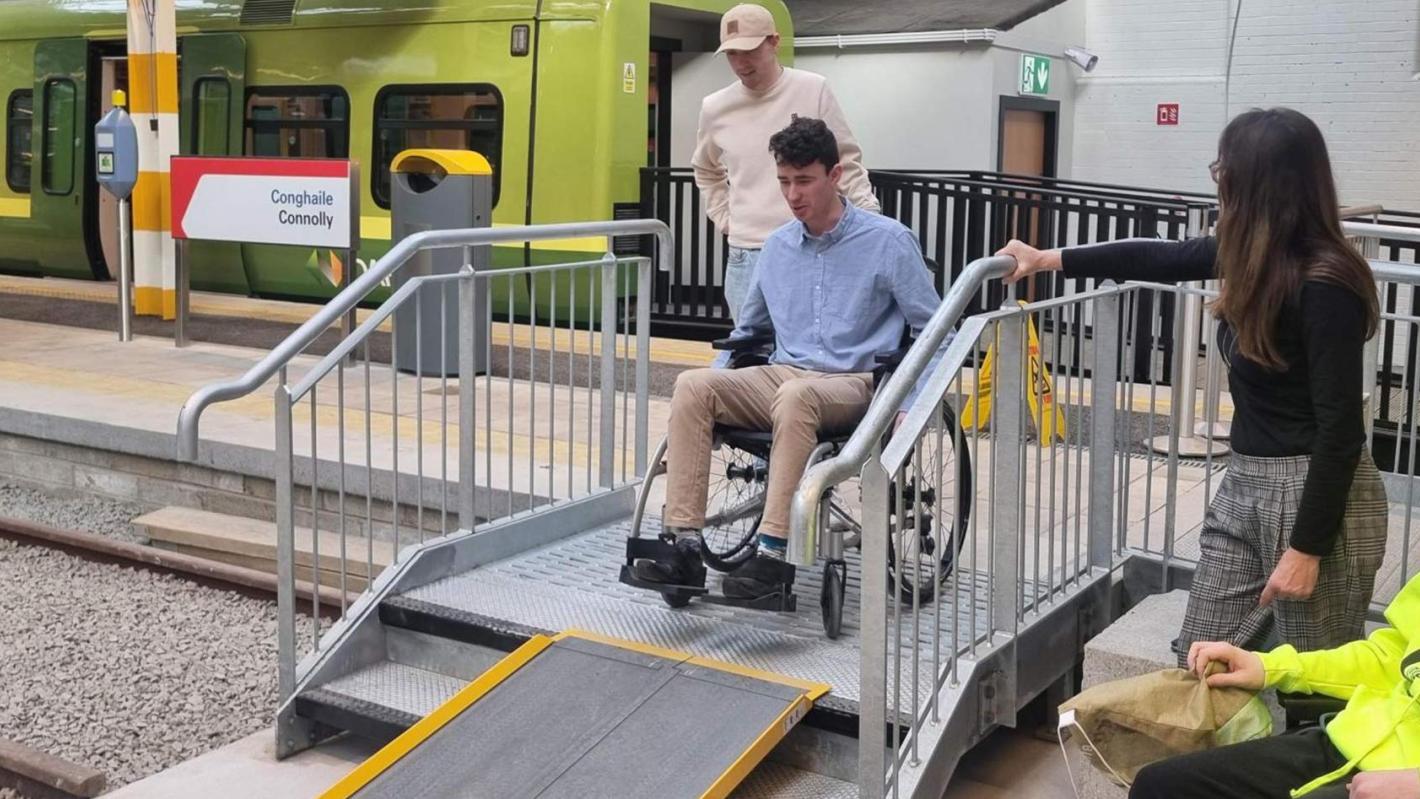
Student engineer, Cathal Ó Gréagóir, navigating a wheelchair ramp with the assistance of Graduate Engineer, Killian McLoughlin.
State-of-the-art transport hub provides the ideal location for training on how to make transport systems more inclusive for those with mobility issues or visual impairments
On 21 February, eighteen members of our engineering team, including students, graduates and technicians, attended a training course at the Wayfinding Centre in Dublin, the world’s first interactive, multi-mode, transport training facility. Designed and delivered by Vision Ireland, the national sight loss agency, the course provided our team with a deeper understanding of the challenges people with disabilities experience when using public transport, which is invaluable in expanding a designer’s way of thinking about the public realm.
The course was led by access ambassadors who, with their lived experience of disability, were well placed to describe the mental workload involved in planning simple journeys and keeping note of inaccessible streets or paths along their route. With the focus on learning through interaction, our team was tasked with accessing a variety of transport modes and features, including a DART carriage, a LUAS module, cycle lanes and bus shelters, using wheelchairs and with their eyes closed. This gave the attendees a deeper understanding of the barriers to travel for people with disabilities, including platform gaps, limited turning radii, and the lack of adaptions in facilities to enable vision impaired people use shorelining (a technique that involves following a wall, kerb, hedge or contrasting surface with a cane to aid navigation) to find a landmark or particular destination. It also helped them to appreciate how much easier and safer facilities designed to be universally accessible can be.
On average, it takes a person with a disability up to five times longer to get from one place to another than for a non-disabled person.
Following the course, our team had a keener sense of their responsibility as designers for ensuring equity and inclusion are at the forefront of their designs, particularly as we work towards a more sustainable Ireland, one in which bus, rail and light rail make up a greater share of the population’s primary means of transport.
Andrew Thomson, ROD associate, said: “Having been part of the project team responsible for the delivery of the Wayfinding Centre in 2024, it was fantastic to see our younger team members experiencing its innovative offerings firsthand. The course was an invaluable learning opportunity for them, immersing them in the full range of transport modes available within the facility and testing their skills on the interconnected roads, crossings, and streetscapes that link various forms of transit.”
Cathal Ó Gréagóir, student engineer, said: “As a cyclist, the bus islands and pedestrian-cyclist conflicts were of particular interest to me. I now understand how important it is to design these intersections to the needs of all users and to be conscious of how some users may be more vulnerable than others, particularly when interacting with cyclists.”
Fatima Quadri, graduate engineer, said: “It is incredible to see how the design of active travel facilities and facilities for vulnerable users are intrinsically connected and how one affects the other.”
